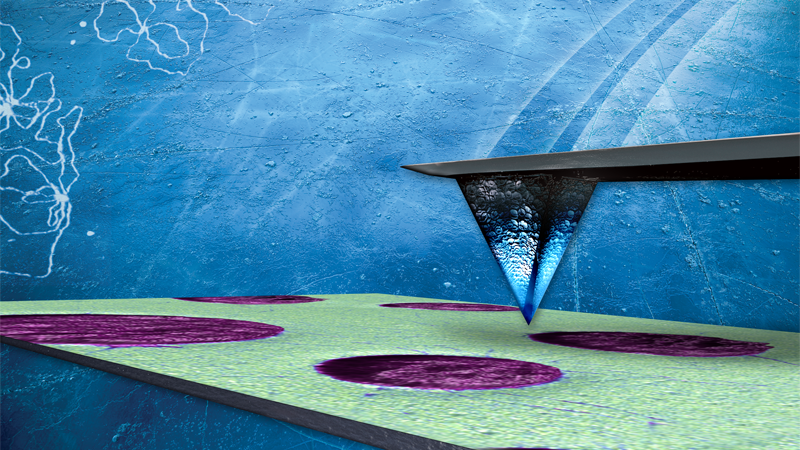Spatially Resolved Surface Photovoltage Spectroscopy
Nano Lett., 2017, 17(11) 6735
Understanding the mechanistic fundamentals of photocatalytic processes is needed for the effective utilization of solar energy. Key aspects include the separation of electron-hole pairs in the semiconductor light absorbers into photocarriers, which subsequently move to the catalytic charge accumulation centers for chemical reactions. In 2015, the authors developed spatially resolved surface photovoltage spectroscopy (SRSPS) [Angew. Chem. Int. Ed. 2015, 54, 9111]. SRSPS was used to directly image highly anisotropic photogenerated charge separations on different facets of a single BiVO₄ particle, showing that the surface photovoltage signal intensity on the {011} facet was 70 times stronger than that on the {010} facets. These results reveal the influence of the built-in electric field in the space charge region of different facets in a single BiVO₄ crystal.
The current work presented here is extended to BiVO₄ particles decorated with facet-selectively photodeposited cocatalyst (MnOx) or dual cocatalyst (MnOx/Pt) nanoparticles. Nano catalysts with the right size (e.g., ~50 nm for MnOx) increase the local surface photovoltage signals up to 80 times in the direction that facilitates the desired water splitting reaction, and enhance the local electric field that promotes the charge separation efficiency. Those findings are directly correlated with the increase of photocatalytic performance for those photoelectrodes in the O₂ evolution reaction. The present work provides important guidelines in designing highly efficient photocatalytic electrodes for solar fuels production.

